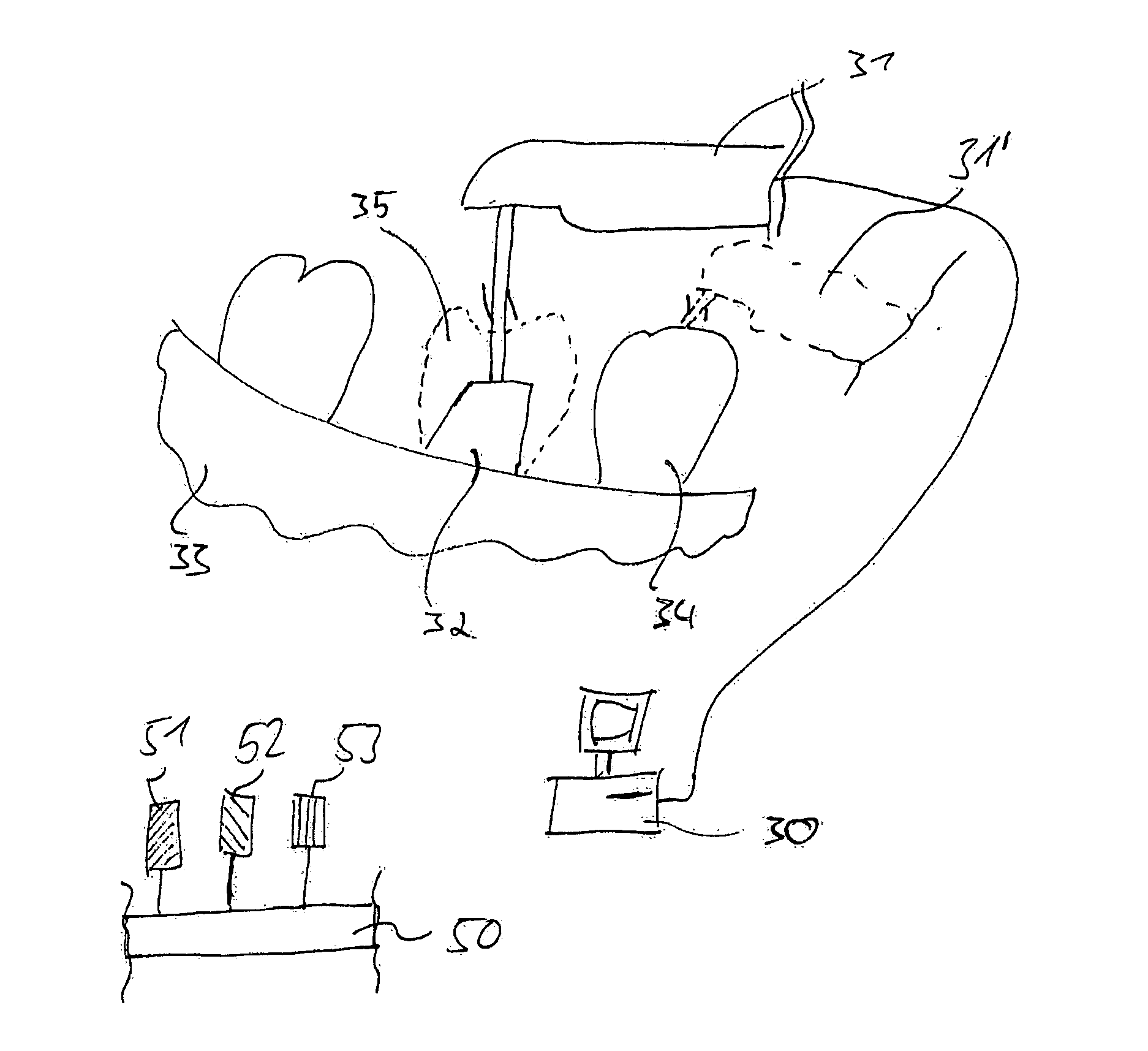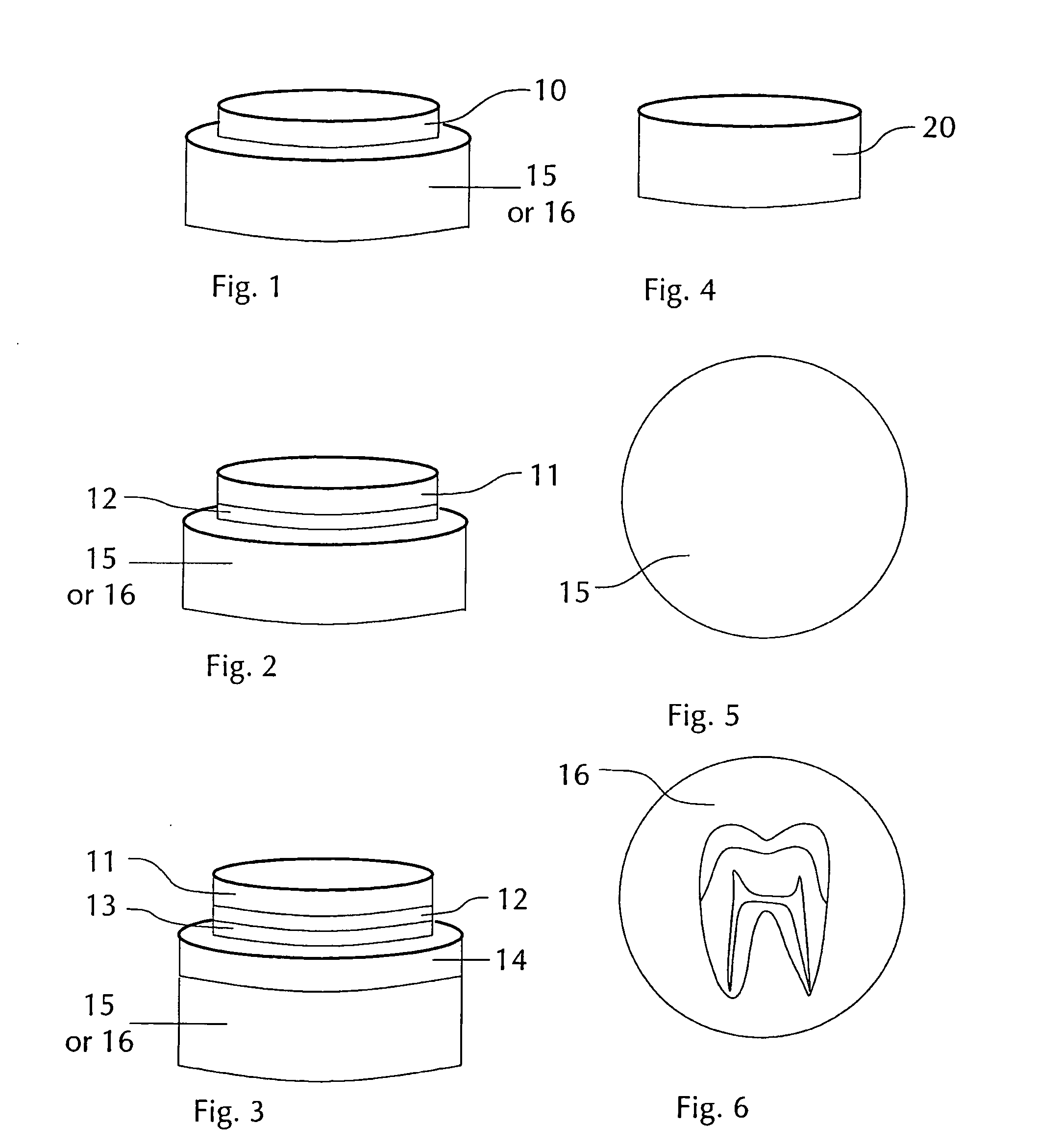Method and apparatus for selecting non-opacious dental materials
a non-opacious, dental material technology, applied in lighting and heating apparatus, furniture, instruments, etc., can solve the problems of limited shade guide effectiveness as shade determination device, limited number of shade tabs, and user's ability to distinguish one shade from another, etc., to achieve the effect of improving shade matching
- Summary
- Abstract
- Description
- Claims
- Application Information
AI Technical Summary
Benefits of technology
Problems solved by technology
Method used
Image
Examples
third embodiment
[0049] In a third embodiment, the reference template data generated are stored in a subprogram of a CAD / CAM dental restoration manufacturing unit. During the design phase of fabrication, the CAD / CAM machine automatically calculates the average thickness of the planned restoration and delivers the data to the subprogram; the user manually enters the desired final shade and the prepared tooth shade. The subprogram makes the appropriate color difference analyses and proposes the materials that will result in the closest shade match.
fourth embodiment
[0050] In a fourth embodiment, a color measurement instrument and the CAD / CAM dental restoration unit are linked to one another, either physically or wirelessly or by virtue of some other known communication method and the data generated are stored in a subprogram in either unit. The prepared tooth shade is measured with the color measurement device, the planned restoration average thickness is calculated by the CAD / CAM software, and the desired shade of the restoration is entered manually by the user or is determined by measurement of an adjacent tooth with the color measurement device. As in the other exemplary embodiments, the subprogram calculates the materials combination that results in the best shade match.
[0051] It is obvious that a number of other variations in the functionality of the method are possible without deviation from the scope of the invention. For instance, the program can be given a color difference tolerance range that will function to warn the user when this ...
PUM
 Login to View More
Login to View More Abstract
Description
Claims
Application Information
 Login to View More
Login to View More - R&D
- Intellectual Property
- Life Sciences
- Materials
- Tech Scout
- Unparalleled Data Quality
- Higher Quality Content
- 60% Fewer Hallucinations
Browse by: Latest US Patents, China's latest patents, Technical Efficacy Thesaurus, Application Domain, Technology Topic, Popular Technical Reports.
© 2025 PatSnap. All rights reserved.Legal|Privacy policy|Modern Slavery Act Transparency Statement|Sitemap|About US| Contact US: help@patsnap.com



